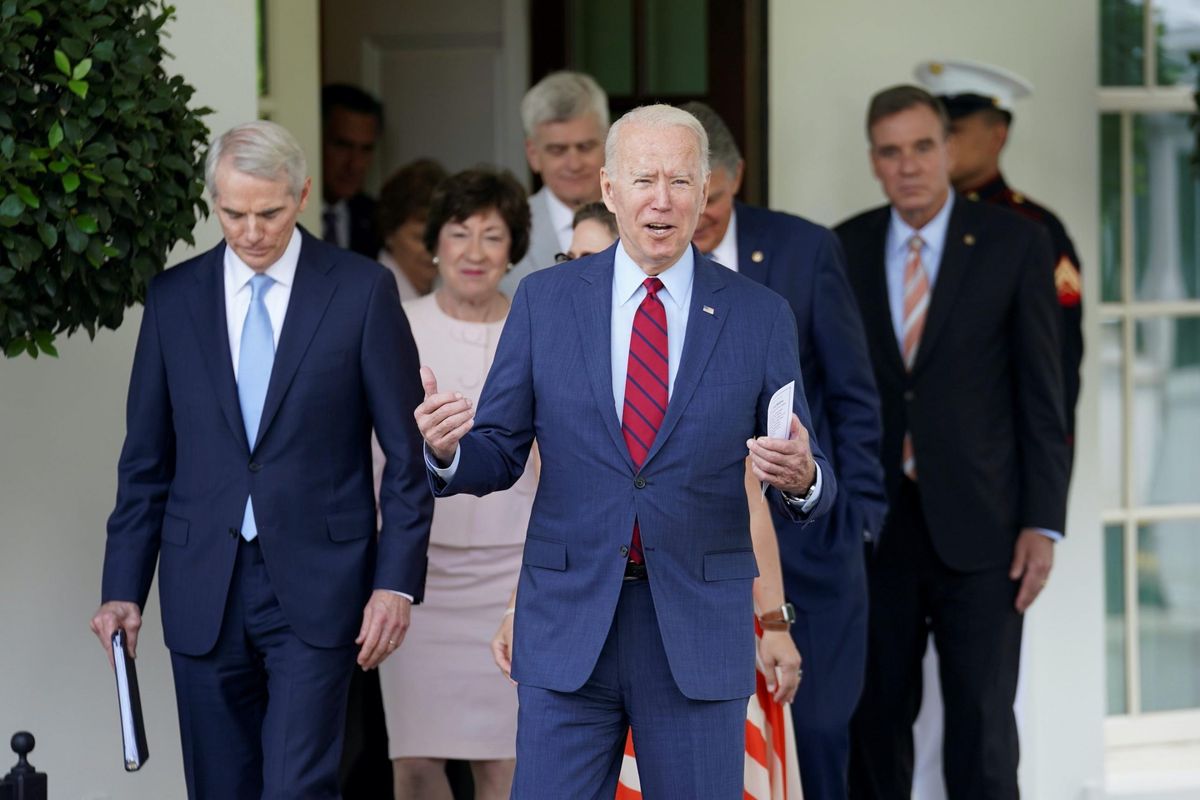The path forward for Biden’s infrastructure plan, explained

A few minutes every morning is all you need.
Stay up to date on the world's Headlines and Human Stories. It's fun, it's factual, it's fluff-free.
The new bill seems to have really just cut a little bit off of everything in Biden’s original package, with the largest cuts coming from environmental projects.
What’s new with the bill?
- First off, keep in mind that to pass a bill through the United States Senate, it needs to overcome the filibuster. That means that any piece of legislation needs 60 votes, rather than a 51-vote majority, to be sent to the president’s desk to be signed into law. With a 50-50 Senate, that means Democrats have to get 10 Republicans to sign onto the bill if it has any chance of passing.
- To do this, centrists like Senators Joe Manchin of West Virginia and Kyrsten Sinema of Arizona have been meeting with a group of their Republican counterparts in the Senate to strike a deal that many Democrats thought was unlikely or downright impossible.
- On July 24, the group of 10 senators – five Democrats and five Republicans – reached a deal for a US$1.2 trillion dollar infrastructure package that has a significant amount of what was in the original US$2.3 trillion dollar bill President Joe Biden originally proposed.
- The bill was announced as a massive success, but right after the announcement Biden and the Democratic leadership said that the infrastructure package would have to arrive in tandem with a large reconciliation bill.
- Reconciliation bills can only change the federal tax code and they’re immune to a filibuster, which means only 50 Democrats and a tiebreaking vote by Vice President Kamala Harris would be needed for passage.
What’s in the bipartisan bill?
- The new bill seems to have really just cut a little bit off of everything in Biden’s original package, with the largest cuts coming from environmental projects.
- It includes US$312 billion for transportation infrastructure like roads, bridges, airports and seaports, as well as an additional US$266 billion on other infrastructure, like power grids, water pipes and high-speed broadband.
- How it gets paid for has been the subject of much discussion throughout the negotiations, but the ultimate agreement uses two main sources of funds to pay for it.
- Firstly, it would use funds under the COVID-19 stimulus packages that went unused. Secondly, it would increase funding for the IRS (Internal Revenue Service) to bring in an estimated US$140 billion in unpaid taxes.
How does the announcement of the reconciliation bill affect the chances of passing the infrastructure one?
- That’s the question a lot of people are asking and while there isn’t a clear answer just yet, we do have some ideas.
- First off, Biden has said he’s deeply committed to the agreement on infrastructure. There was some confusion about whether or not he would veto an infrastructure bill if it came without a reconciliation bill, but ultimately he made it clear that he wasn’t holding it hostage, calming worried Republicans.
- Second, the reconciliation bill would likely bring some Democrats on board who were skeptical of the cuts in the infrastructure package. For example, Senator Ed Markey of Massachusetts made his priorities of climate funding clear by simply saying, “No climate, no deal.” A large reconciliation bill, though, would likely bring far-left Democrats back to the table for an infrastructure package that they might think is insufficient on its own.
- That isn’t to say the bill’s passage is guaranteed. Senate Minority Leader Mitch McConnell has been accused of being obstructionist when it comes to the Biden agenda and it isn’t clear yet if 10 Republicans will vote for the bill in the end.
- Ultimately, the chances of passing the bill seem to be good, but certainly not a lock. The two bills are expected to be put together and passed by the end of the fall.
Have a tip or story? Get in touch with our reporters at tips@themilsource.com




Comments ()